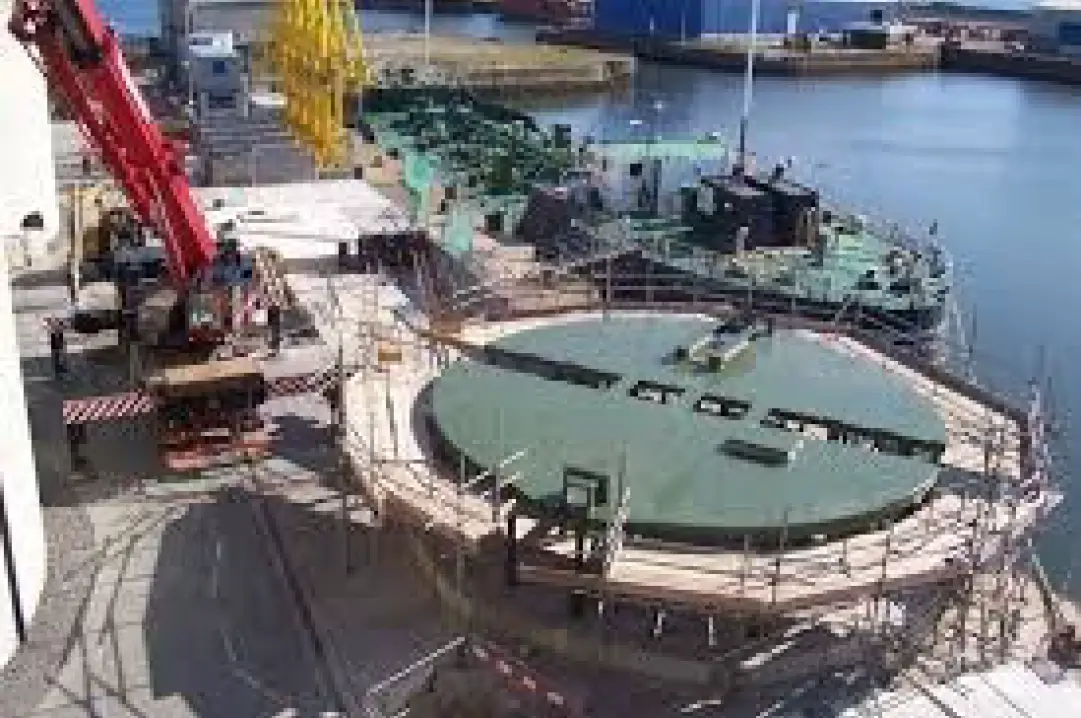Management Plans - Understanding Your Risk
Water Pollution Management
Why Plan Ahead?
- Reduces Operational Risk
- Program delays
- Cost over runs
- Reduced risk of environmental incident
- Reduced use of resources
- Increased profit
- Better stakeholder relations

Understanding a Pollution Event


Pathway

Receptor
Factors Affecting Volumes of Surface Water

- Annual rainfall
- Steepness of slope
- Permeability of soil

Run Off Estimation Small Catchments
CIRIA Method Less than 50 Ha
- Step 1 Establish site annual average rainfall.
- Step 2 Calculate catchment area (ha)
- Step 3 Determine soil type
- Step 4 Read unit runoff from table (litres per second per hectare)
- Step 5 Select Return Period
- Step 6 Peak flow (l/s) = Catchment area (ha) x Runoff Factor x Return Period Factor
Step 1: Establish the Annual Average Rainfall

- Rainfall Maps
- Meteorological Stations
Step 2: Determine the Catchment Area

- OS Maps
- Topographic Surveys
- Site Walk Over
Step 3 Determine the Soil Class
Soil Class determines the amount of amount that soaks into the ground amount that can form run
| Soil Class | Run-off Potential | Description |
| 1 | Very Low | Well drained, sandy, loamy or earthy peat soils |
| 2 | Low | Very permeable soils (e.g. gravels, sands with shallow groundwater or rock) |
| 3 | Moderate | Very fine sands, silts and clays. Permeable soils with shallow groundwater in low lying areas |
| 4 | High | Clayey or loamy soils |
| 5 | Very High | Wet uplands, shallow rocky soils on steep slopes, peat with impermeable layers at shallow depth |
Step 4: Determine the Mean Annual Peak Flow
Peak Flow Litres/Second/Hectare
| Soil Type | Annual Rainfall (mm) | |||||
| <600 | 600 – 800 | 800 – 1200 | 1200 – 1600 | 1600 – 3200 | >3200 | |
| 1 | 0.3 | 0.4 | 0.6 | 0.9 | 1.7 | 2.4 |
| 2 | 1.4 | 1.8 | 2.8 | 4.1 | 7.7 | 10.8 |
| 3 | 2.6 | 3.4 | 5.2 | 7.7 | 14.4 | 20.1 |
| 4 | 3.3 | 4.4 | 6.7 | 9.9 | 18.6 | 26.0 |
| 5 | 4.2 | 5.5 | 8.4 | 12.4 | 23.3 | 32.7 |
Step 5: Calculate the Peak Flow
Peak Flow Litres/Second
| Return period | 2 | 5 | 10 | 25 | 50 |
| Factor | 1 | 1.22 | 1.48 | 1.88 | 2.22 |
Note
The CIRIA Method does not take the slope of the site into account. For steep sites use the MAFF Method.
The CIRIA method has a number of conservative assumptions built into it, has a tendency to overestimate the peak flow.
Peak Flow Litres/Second
Construction Project in the S E England
| Duration | 2yrs |
| Catchment Area | 5ha |
| Soil type | Clayey |
| Project risk | Medium |
| Step 1 | Annual rainfall (SE England): | <600mm/yr |
| Step 2 | Catchment Area: | 5Ha |
| Step 3 | Soil class: | Class 4 (clayey) |
Worked Example (2 of 3)
Step 4: Determine the Mean Annual Peak Flow (Litres/sec/ha)
| Soil Type | Annual Rainfall (mm) | |||||
| <600 | 600 – 800 | 800 – 1200 | 1200 – 1600 | 1600 – 3200 | >3200 | |
| 1 | 0.3 | 0.4 | 0.6 | 0.9 | 1.7 | 2.4 |
| 2 | 1.4 | 1.8 | 2.8 | 4.1 | 7.7 | 10.8 |
| 3 | 2.6 | 3.4 | 5.2 | 7.7 | 14.4 | 20.1 |
| 4 | 3.3 | 4.4 | 6.7 | 9.9 | 18.6 | 26.0 |
| 5 | 4.2 | 5.5 | 8.4 | 12.4 | 23.3 | 32.7 |
Worked Example (3 of 3)
| Step 5 | Select Return period | |
| 2-year duration | ||
| Medium Risk | ||
| Selected return period: | 1:10 yrs | |
| (giving a 19% probability of exceedance) | ||
| Return period multiplication factor | 1.48 | |
| Step 6 | Calculate Peak flow: | |
| Catchment Area x Average unit run-off x Return period factor | ||
| 5 x 3.3 x =1.48 24.4l/s = 88m3/hr | ||
Understanding Risk

High Risk and Low Risk Sites
| Factor | High Risk | Low Risk |
| Steeply Sloping Sites | High | |
| Permeable Soil (eg sands and gravels) | Low | |
| High Rainfall Areas | High | |
| No direct connection to surface water body | Low | |
| Works required within or on banks of waterbody | High | |
| Site located within 500m of conservation area (SSSI) | High | |
| Receiving water body classified as good or moderate quality | High | |
| Receiving water body has high amenity value eg fishing, recreation or potable water abstraction | High |
Company Procedures
Purpose
- To ensure early identification of high sites
- To ensure that water issues are considered within the early stages of a project, ideally before the site is purchased
- To identify sites where additional technical support of the project team is required
- To provide consistency in approach from one project to another
- To develop routine monitoring programs to include the consideration of the water environment
- To encourage a proactive approach to the management of project risks
Keep Moat Homes - Surface Water Management Plan
- Purpose
- Scope
- Process
- Site Details
- Change Log
- Surface Water Management Plan Sign Off
- Site Plan and Layout
- Site Features likely to indicate a High Pollution Risk Rating
- Water Sources and drainage infrastructure entering the site
- Capture Methods
- Treatment
- Discharge Point
- Permits, Licences and Consents
- Emergency Measures and Arrangements
- Monitoring Arrangements (locations marked on plan)
- Reporting
- Review Frequencies
- Equipment Standards
Purpose
To reduce the risk of contamination of controlled waters caused by our work activities. Specifically, this involves:
- Identifying sources of potential contamination (surface and silt water run-off, fuel and chemical storage, excavation pumping operations etc.)
- Determining the receptors (water courses, ground water and foul drains) for any potential discharge and identifying whether this site is a ‘High’ risk development
- Developing and implementing controls for minimising risk, through control and treatment
- Utilising appointed technical consultants to assist in developing appropriate and effective methods of control
- Ensuring effective Monitoring and Maintenance of pollution prevention measures
- Developing a specific and effective Surface Water Management Plan, using this template
- Preparation of an associated Pollution Incident Response Plan for emergency situations (HSS-FO-001-Spill)
- Assurance of effectiveness through the implementation of inspection, monitoring and sampling measures, using the associated HSS-FO-001 Water Management & Pollution Prevention Inspection Checklists found on Airsweb.
Site Plan and Layout
- Location of this land within the construction site as a whole (if the plan covers only part of the site)
- Location of water courses (incl. culverted watercourses, land drains etc. ponds, wetlands, springs, ditches, estuaries and coast) on the construction site
- Details of water courses entering the site, surface water run-off, waterway etc.
- Location of surface water capture and treatment measures
- Details of existing drainage infrastructure on site
Site Features Likely to Indicate a High Pollution Risk Rating
- Water course within 100 metres of site boundary
- Discharge from site flows directly into a water course or surface water drainage network
- Water course contains visible aquatic life (fish etc) or has been assessed as environmentally sensitive
- Soils investigation identifies clay (impermeable materials)
- Site exposed, or at high altitude or steep gradient
- Rainfall prediction in location >1600 mm/year
- Historical evidence indicates site suffers from seasonal flooding
- Protected Areas (SSSI, national park etc) located within 500 m downstream
- Groundwater level detected at installed pipe-work depths
- Likely volumes of temporary discharge will exceed those designed for the final discharge consent
- Local water course used as local amenity (fishing, boating, swimming)
- Construction Program identifies that final discharge point will not be available in less than 3 months
- Treatment of water discharge is likely to be required to achieve the quality standard of acceptability
- Consortium site with shared collection and discharge outlets
How many positive answers does your site get?
| 0 | Low Risk |
| 1 – 7 | Medium Risk |
| 8+ | High Risk |
Site Features Likely to Indicate a High Pollution Risk Rating
For example:
- Springs/Pumping Sources
- Existing streams and ditches
- Road Gullies/highway drainage
Provide details of:
- Size
- Outfall
- Flow Rate

Permits, Licences and Consents
- Foul sewer
- Surface/ground water discharge
- Canal & River Trust Discharge
Discharge
- Abstraction and Other
- Abstraction Licences
- Standpipe Licences
- Flood risk permits
Include
Details of key criteria associated with the permit, licence/consent.
- Discharge limits Flow and Composition
- Permit Reference Number
- Issuing Authority
- Expiry Date
Monitoring Arrangements (Locations Marked on Plan)
What
What is the name of the feature to be monitored?
- Unmade Ground (surface flows)
- Excavations
- Culverts
- Settlement Ponds
- Settlement Tanks
- Site Water Entry Points
- Site Water Exit Points
- Gully inspections
- Treatment Systems (eg silt fence)
- Upstream Locations
- Visual Inspection
- Field Measurement
- Laboratory Analysis
- Flow
- Photographs
When – Frequency
- Daily
- Weekly
- Before expected storm
- After a storm event
By Whom
- Responsible Person
- Client
- External Body
Questions to Be Answered Before Starting Work
- How much water will be generated?
- Where will excess water be discharged to?
- What Permits, Consents, Licences will be required?
- How clean does the discharge need to be?
- How is the required treatment standard going to be achieved?
- How much land is required for treatment?
- How are we going to monitor compliance?

Simon Skentelbery
General Manager
John F Hunt Regeneration Ltd
London Road
Grays
Essex
RM20 4DB
M: 07967 306 517
E: simon.skentelbery@johnfhunt.co.uk
W: johnfhuntregeneration.co.uk